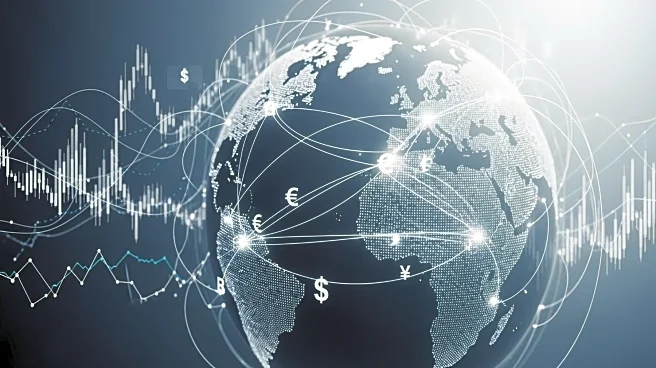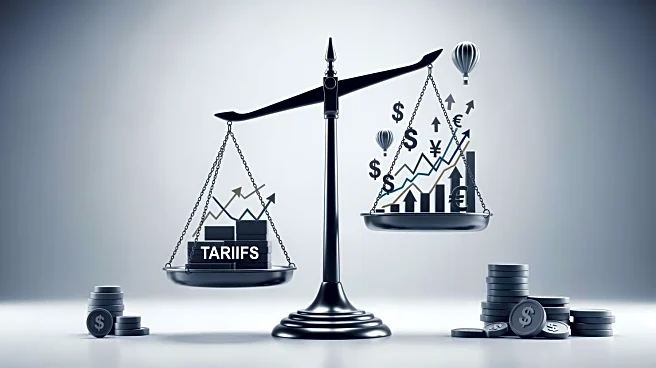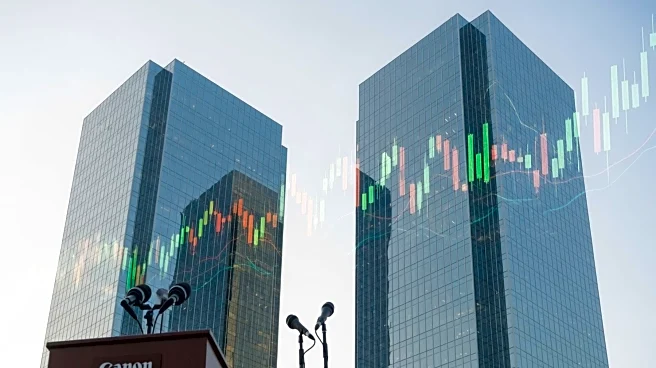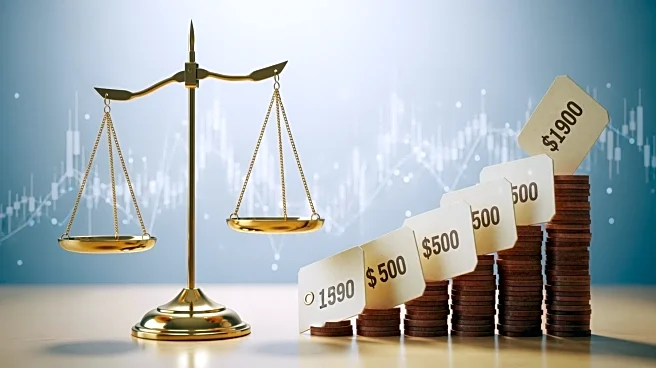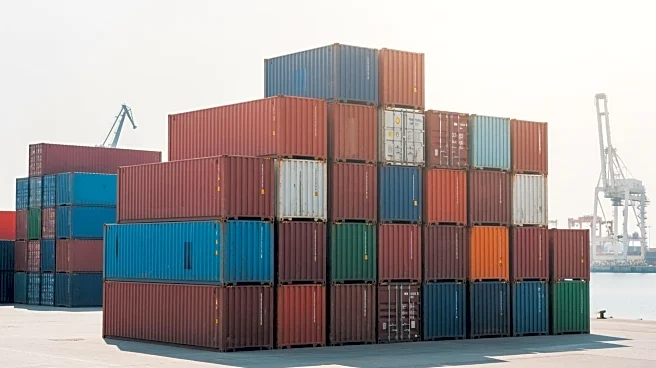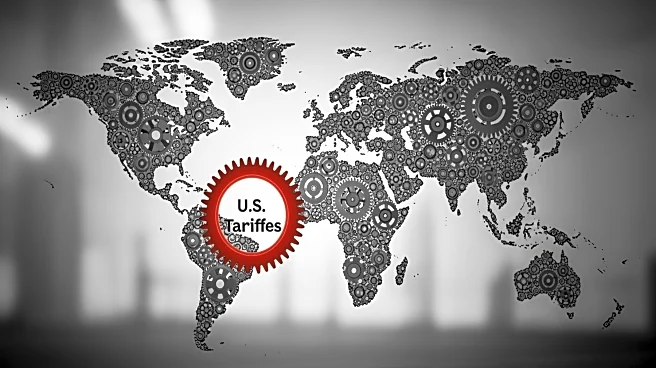What's Happening?
According to S&P Global, President Trump's tariffs are projected to cost global businesses $1.2 trillion in 2025, with the majority of these costs being passed onto consumers. The analysis highlights that tariffs and trade barriers act as taxes on supply
chains, diverting cash to governments and increasing logistics delays and freight costs. The report suggests that only one-third of the tariff costs will be borne by companies, while consumers will face the remaining two-thirds. This financial burden is expected to result in higher prices for goods and services, affecting consumer spending and economic growth.
Why It's Important?
The significant cost of tariffs underscores the impact of trade policies on the global economy, particularly on consumer prices. As companies pass these costs onto consumers, it could lead to reduced purchasing power and economic slowdown. The report indicates a systemic transfer of wealth from corporate profits to workers, suppliers, and governments, highlighting the broader economic implications of tariff policies. This situation may prompt businesses to reevaluate their supply chains and seek alternative markets or production strategies.
What's Next?
The ongoing trade negotiations and agreements may lead to adjustments in tariff policies, potentially alleviating some of the financial burdens on businesses and consumers. However, the current trajectory suggests continued economic challenges, with companies and consumers needing to adapt to higher costs. Policymakers may face pressure to address these issues and find solutions to mitigate the impact on the economy.
